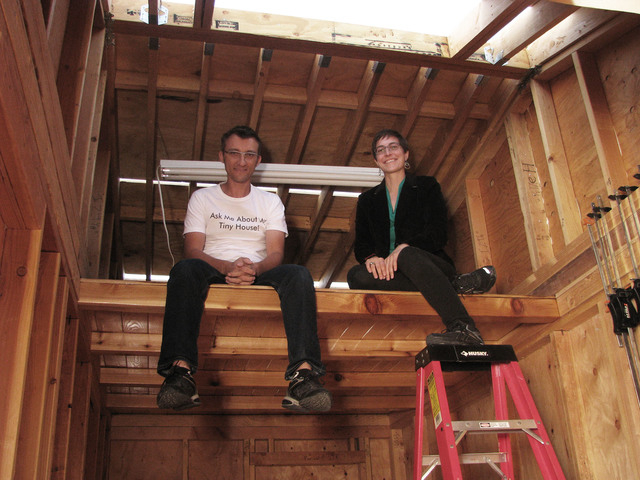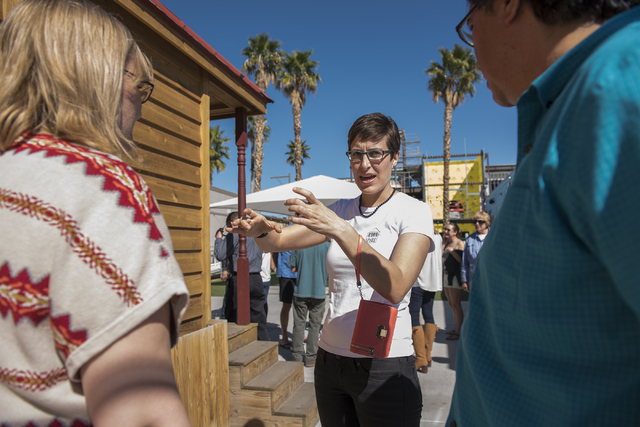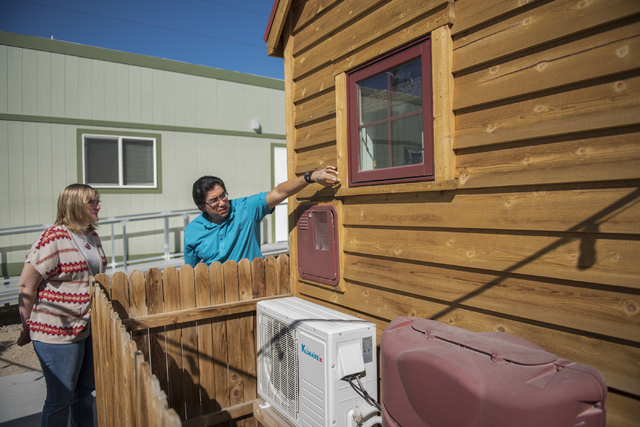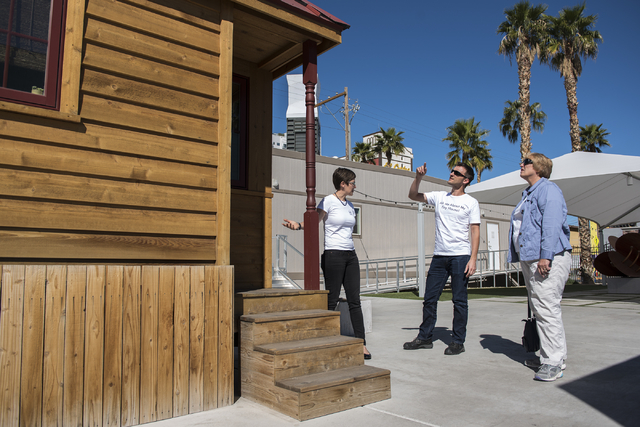Scaled-down living: Couple plan to build a 20-foot-long home
If everything goes as they plan, Betsie and Paul Wolford will build and move into a home with a kitchen, a full-size shower, two bedrooms and a common area, all packed in a space smaller than most bedrooms.
The Wolfords are interested in becoming part of the tiny house movement, which contends that for many people, they don’t own a house as much as a house owns them. So they’re scaling back their possessions in anticipation of living in a custom-built mini Shangri-La on wheels.
“We want to build it on a 20-foot-long trailer,” Betsie said. “When we started, we were thinking about a 24-foot trailer, but with bigger trailers, there are more complications dealing with the different laws in different states. There are things like how many axles you have to have when it gets that big and other issues we want to avoid.”
The couple are currently living in a 1,700-square-foot rented home. The tiny home they are designing is either 160 or 205 square feet, depending on how the two sleeping lofts are calculated — one for the couple and one for a guest or a child down the road.
“In the place we’re at now, we just use the bedroom, the kitchen and the living room. It’s kind of a waste,” Betsie said. “Moving into a tiny home should cut our living expenses in half. We’ve already started paring down, getting rid of clothes we don’t wear and anything we don’t use. We want all of our stuff to be necessary and have a purpose.”
For that same reason, the Wolfords plan to build their home from the trailer up so they can customize their space and not waste it with amenities they don’t want or need. It will also allow them to build it with materials with which they feel comfortable.
“If we build it ourselves, we know what’s in it and we can use more healthy materials,” Paul said. “We can choose things like the adhesives and avoid toxic building supplies.”
Jeff Wilson and Megan Masching are also excited about the tiny house movement. The couple created the Las Vegas Tiny House Group on Facebook to communicate with like-minded people on the whys and hows of construction and living in a tiny home.
“When I moved to Las Vegas, I was part of a touring show and I had five suitcases,” Masching said. “Now we fill a three-bedroom, two-bathroom house. It’s hard to scale down and go the other way, but you’ve got to let it go.”
The difference between a tiny home and the average mobile home is mostly a matter of design and attitude. Tiny homes tend to look less like streamlined trailers and more like quaint, cozy cabins with wheels. Most mobile homes are designed for traveling first with the living space secondary. Most tiny homes aren’t as concerned about aerodynamics as they are creating a comfortable living space. The elements inside are designed and placed with the same thought process as the interior of a spaceship. Elements are chosen for ability and efficiency, and cost is a lower consideration.
“We’ve already bought a new vacuum cleaner for the house that is narrow and comes apart,” Paul said. “We’re looking into a convection microwave because that works like an oven, too. One issue with tiny houses is plumbing, because you have to deal with black water, gray water and waste. So we want to go with a composting toilet. They’re actually portable.”
The tiny house lifestyle isn’t suited for everyone. Many hobbies preclude it. A quilter could fill one with Tupperware containers full of fabric in minutes. The Wolfords like to hike, climb and camp, and they’ve designed their tiny home with storage for that gear, which cuts into the room for storing other things. Paul is a musician, and he knows his drums and most of his guitars will have to be put in off-site storage while they live in their wheeled wonderland.
There are other space sacrifices they’re unwilling to make.
“We’ll have a full-sized shower,” Betsie said. “We wanted to keep most of our stuff full-sized so that we can still feel kind of normal.”
Currently the big name in tiny houses is Tumbleweed Tiny House Co. based in Colorado with an office in the San Francisco Bay Area. The company builds tiny houses, holds workshops on them across the country and sells plans to build tiny homes. Paul is designing his own, but Wilson and Masching are working from Tumbleweed blueprints.
“We figure it will run to about $20,000 to build it,” Paul said. “What we need now is a place to do that. We either need to rent a warehouse or find someone’s yard to build on. Most places out here don’t have yards big enough to build on, and even if they do, most HOAs aren’t going to go for that.”
Masching met with a friend who is a longtime Las Vegas resident about the viability of renting a warehouse for their project. When she explained what they were doing, he told her to forget about a warehouse; they could build it in his backyard, and he’d help.
Wilson and Masching’s tiny home is well under way at the private residence in a more rural area in the souhwest valley. They hope to have it finished by August, when the lease runs out on their rental home, but they concede that many factors could slow them down, including the fact that they work different schedules and have a limited time to work on it together. Like the Wolfords, they’re also deeply into scaling back their possessions.
“If we have something a friend could use, we’ll give that to them, although we don’t want to just shift the problem of too many possessions to our friends,” Wilson said. “If something has value, we put it on eBay. A lot of things have gone to donations. Goodwill has had a couple of banner days because of us. The things we are keeping either have a purpose or bring joy to us.”
Finding a place to build it is one problem. Finding a place to live in it when it’s done is a separate issue. There are plenty of mobile home and manufactured housing communities in the valley, but many tiny home builders perceive a stigma there and hope for something similar to a mobile home community, but with more emphasis on the “community” than the “mobile.” They’d also like this utopian place to be full of tiny homes instead of trailers.
“Idyllically, we’d get a piece of land and start with us,” Masching said. “It would be great to start a community, arrange the tiny homes in a circle with nice landscaping and maybe have a communal laundry facility. We’ll figure out where to put the home after we get the roof on. That’s our big concern right now.”
To reach East Valley View reporter F. Andrew Taylor, email ataylor@viewnews.com or call 702-380-4532.























